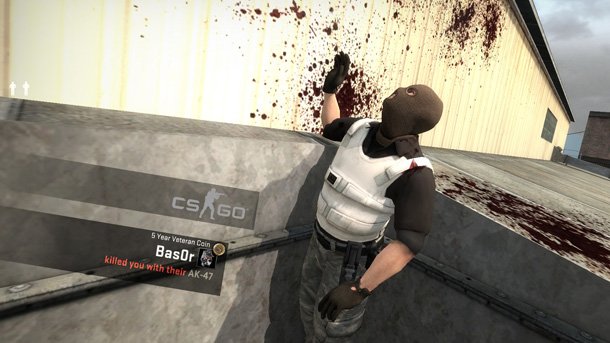Losing it: Why bad players keep trying with good games

Written by Matt Thrower
Fifteen years ago I thought myself the god of Unreal Tournament : an untouchable colossus of speed and firepower tearing through every difficulty level with consummate ease. So naturally, as soon as I got broadband I tried out for a high ranking clan. They wiped the floor with me, blowing my avatar asunder with the same insouciance I had playing against the bots and laughing as they fell before me.
It was the beginning of a long and illustrious career of being Very Bad Indeed at online games. Yet here I remain, regularly clocking hours on Left 4 Dead , Call of Duty , and DayZ and regularly left propping up the leaderboards.
I'm hardly alone. Public servers commonly have their fair share of deadbeats alongside the clan members and twitch kiddies who rule the maps. The gaming demographic increasingly includes middle-aged people with kids and mortgages who want to kick back in the evening and have some fun, but don't have the free time to practice. And, predictably, the more experienced players slaughter them, time and time again. Why do we keep coming back for more pain?
Suckers for punishment
Lennart Nacke, who researches affective gaming and entertainment computing at the University of Ontario Institute of Technology, suggests it might be connected to something he calls the feedback loop of self-regulation. “We need four things to regulate our behavior: standards, monitoring, strength and motivation,” he tells me. “People in online games form their standard by participating in matches and monitoring their own performance. Every time they engage in another match they get feedback on their prior performance and adjust their current efforts.”
But doesn't that mean that practice would eventually lower their motivation when they reached their desired standard? “The randomness of the players and the randomness in the twitch games themselves mean the standard is constantly adjusting,” he says. “It keeps the players in a monitoring loop of their own behavior and this leads them to come back.”

This desire to practice and improve is a colossal motivator, an effect more widely known as positive reinforcement. Mia Consalvo, Research Chair in Game Studies at Concordia University, agrees—and she has some data to back up her opinion.
Keep up to date with the most important stories and the best deals, as picked by the PC Gamer team.
“In my research on why people cheat, I found that most players went to great effort not to cheat—they wanted to earn their achievements in games fairly, via their own efforts,” she says. “This leads me to believe that often, players really want that sense of accomplishment that comes from their own efforts and skills via play. That suggests that such players are earnest in wanting to advance in the game. And here that takes the form of multiple plays, even without success.”
There's substantial research to back up the hypothesis that, counter-intuitively, failure actually encourages further participation. A 2011 study of internet chess by Mihaly Csikszentmihalyi and Sami Abuhamdeh suggested that players actively chose more capable opponents, and had the most fun against people that they beat only 25 percent of the time, on average.
This seemingly contradictory enjoyment of failure has a parallel in philosophy known as the “tragedy paradox.” Why do people actively enjoy works of art that prompt unpleasant emotions such as sadness and fear? There's no straightforward answer, but we're all familiar with the experience of bellowing the rage and frustration engendered by failure at the screen, and then quite sincerely telling our friends how great the game was.
Lennart points out that video games offer a uniquely good environment to explore this effect. “They put us in an explicit rule context, where our boundaries are known and we can quickly observe the skills of other players,” he tells me. “This framing of a game allows us to set clear a goal for our behavior and it is much easier to monitor our progress than in real life, where the rules are not clear and the skills of our opponents would be unknown to us.”

